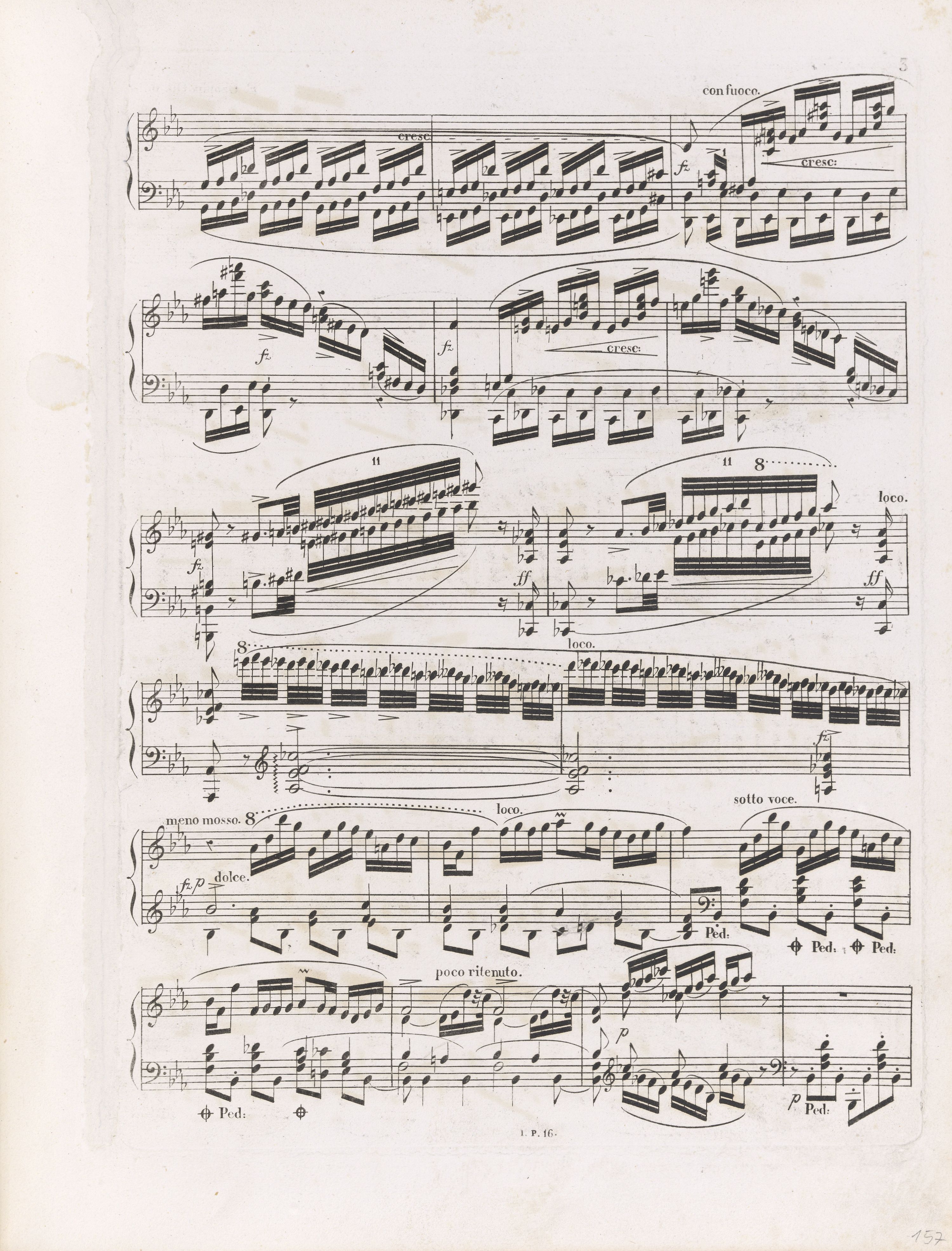Op. 2, Variations in B♭ major
Op. 10, 12 Etudes
Op. 11, Concerto in E minor
Op. 21, Concerto in F minor
Op. 22, Polonaise in E♭ major
Op. 24, 4 Mazurkas
Op. 25, 12 Etudes
Op. 26, 2 Polonaises
Op. 27, 2 Nocturnes
Op. 28, 24 Preludes
Op. 30, 4 Mazurkas
Op. 35, Sonata in B♭ minor
Op. 50, 3 Mazurkas
Op. 63, 3 Mazurkas
Op. 64, 3 Waltzes
(Op. 4), Sonata in C minor




Op. 16, Rondo in E♭ major
In the sequence led in parallel sixths, the accidentals on the 2nd and 3rd beats of the bar (until the b2-g 3 crotchet) are written in the sources as if it constituted a separate bar and as if the L.H. were significantly or totally written on a separate (bottom) stave:
3 crotchet) are written in the sources as if it constituted a separate bar and as if the L.H. were significantly or totally written on a separate (bottom) stave:
- in FE, accidentals are present before each note of the R.H., including the first g
 1, as well as before seven notes in the L.H. – from b to g
1, as well as before seven notes in the L.H. – from b to g 1 and b1;
1 and b1; - GE repeated all accidentals present in FE except for the
 before the first b in the L.H.; moreover, accidentals were added before the 2nd part of the undecuplet in the L.H., from c
before the first b in the L.H.; moreover, accidentals were added before the 2nd part of the undecuplet in the L.H., from c 2 to a2;
2 to a2; - EE provided each note in both hands with accidentals.
We base the main text on the notation of FE, removing three least justified, according to us, cautionary accidentals – the  before g
before g 1 in the R.H. and the naturals before b and b1 in the L.H.
1 in the R.H. and the naturals before b and b1 in the L.H.
Compare the passage in the sources »
category imprint: Differences between sources; Editorial revisions
issues: EE revisions, GE revisions, Cautionary accidentals
notation: Pitch

